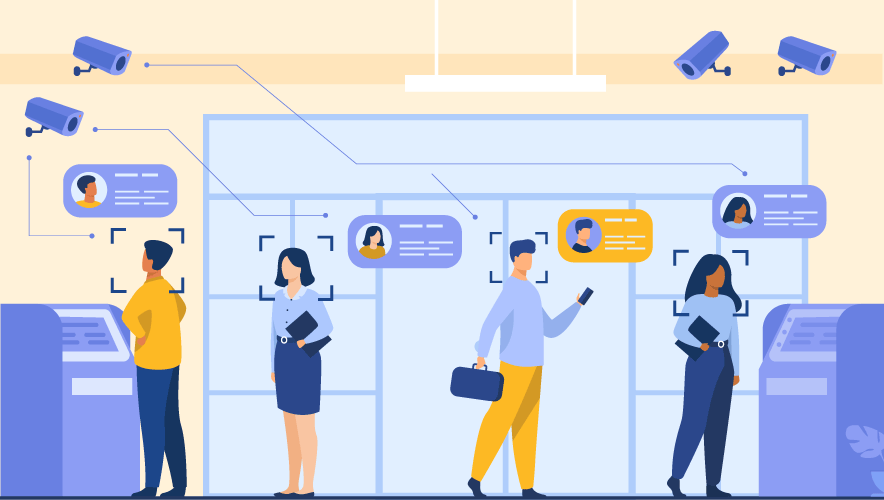Mobile Access and Secured Entry Solutions: The New Lobby Ecosystem
Corporate lobbies play an important role in establishing organizational identity. For most organizations, this means creating a lobby that is secure, yet inviting. Unobtrusive, yet functional. Failure to do so opens the proverbial—and literal door—to threats beyond that of just a bad first impression, including theft, vandalism, and workplace violence.
The new lobby ecosystem is all about creating balance between form and function to mitigate such risks. Secured entry solutions integrated with mobile access offer front line protection against risks that can harm organizations from the outside in.
The Rise of Touchless, Mobile Access
The use of mobile credentials in access control is nothing new but hit an all-out fever pitch in 2020 after the COVID-19 pandemic created a heightened demand for touchless solutions. Mobile access was hailed as a health and safety breakthrough, helping to reduce touch surfaces and promote social distancing. While touchless access is still a big benefit of mobile credentials, there are many other reasons to deploy this technology today.
First, mobile credentials such as QR codes and Bluetooth credentials are much more secure than traditional access cards. Access cards can easily be lost, shared, or stolen, leaving an organization vulnerable to insider and outsider threats. People are also far less likely to lose or share their smartphone than they would other types of physical credentials.
Mobile access is also far more convenient and cost-effective for users and administrators. Users no longer need to carry around and remember physical credentials, while time and money are saved by removing processes related to credential administration (ordering cards, replacing lost key fobs, delivering the credential, etc.).
With mobile credentials, access provisioning can be completed digitally within seconds. This means that a new employee can request access rights to his or her new office digitally from an administrator working across the country and receive immediate approval and access. Remote management also enables integration with HR and other business systems for heightened security and workforce management applications related to access management.
The benefits of mobile access extend to any entrance type where access control is available. And while many corporate lobbies still make use of traditional swing doors at controlled points of entry, this creates a significant vulnerability in the form of tailgating and piggybacking. When this happens, any number of authorized or unauthorized individuals can pass through the door, leading to confusion and risk.
Secured entry solutions integrated with mobile access solutions inherently facilitate higher levels of security due to their ability to prevent, detect, and deter unauthorized entry attempts. The level of protection offered depends on the secured entry solution with each type playing an important role in lobby design.
Creating Functional Traffic Flow
Mobile access-enabled security entrances combine the best in physical security and access control. With the functionality and benefits of each in mind, it is easy to imagine how these solutions can be deployed in a corporate lobby environment to facilitate security and manage traffic flow.
For instance, picture a corporate lobby as the middleman between “public” and “private” zones. The public zone is usually found on the exterior of a building in areas with minimal security restrictions. Conversely, the private zone lies at the core of the facility and is only available for access by employees and authorized guests. The lobby acts as the “semi-public” zone—a place where members of the public can transact business with the company without entering the private zone.
Mobile access enabled secured entrances effectively limit access to each zone, capable of separating private from public and employees from guests with ease. This kind of separation is essential, not only to maintain security, but also to improve the user experience.
For example, the exterior doors of a lobby are typically left unlocked and open to the public during working hours. Members of the public may need to enter the lobby to check-in as a guest, visit with an individual, or to seek temporary shelter from a storm. However, employee-only entrances offer the opportunity for personnel to bypass this area of the building, thus reducing lobby congestion and streamlining processes.
Interlocking mantrap portals and security revolving doors integrated with mobile access are ideal for employee entrances because they prevent unauthorized entry without the need for security guards to confirm a user’s identity. These solutions enforce single entry by using various sensor systems to ensure that only the authorized individual gains access. Employees can utilize their mobile credentials to verify access and enter the revolving door directly from the exterior, public zone. In doing so, organizations can repurpose security personnel to focus on areas and events of interest, or to provide an enhanced level of services to occupants of the facility.
Conversely, guests and visitors will need to access private zones using the lobby. Here, optical turnstiles equipped with mobile credential readers are the preferred solution. Because mobile credentials can be delivered digitally, visitors can utilize integrated visitor management systems to request access prior to ever being on site. Once a mobile credential has been delivered, authorized guests need only scan their mobile device and proceed through the optical turnstile.
Any attempts at unauthorized entry are alerted immediately, engaging nearby security staff to provide remedial action. While many security entrances provide a visible barrier to help deter unauthorized access, they can be further optimized with sensor systems to alert security personnel when an unauthorized access attempt is detected.
For example, if an individual attempts to bypass a turnstile by jumping over or crawling under it, these sensors would detect the abnormal activity and trigger an alarm. Depending on the installation location (a corporate office lobby or distribution center versus a public subway station), the alarm could be sent directly to a security operations center and/or on-site security personnel to take immediate action. The sensor could also activate audible and visual alarms such as a siren and strobe light to draw immediate attention to the event with the intention of scaring off the perpetrator.
Networking security entrances also allows higher levels of integration with related system technologies like on-demand video recording with the added ability to log all alarmed events for analysis and future planning.
Every corporate lobby is different, requiring the right balance of aesthetics, security, and convenience. Mobile access-enabled security entrances fit the bill and are available in a variety of different styles and functions to fit the needs of even the most discerning organizations. This is the new lobby ecosystem model, which works well for virtually all lobbies, new or old.
JC Powell, vice president of sales at Boon Edam, has a background in construction and security sales spanning 19 years, previously working with Greystar as superintendent and EJ Brooks as regional sales manager. Powell started with Boon Edam in 2011 as a territory sales manager for the Southwest Region.
© 2023 JC Powell, Boon Edam Inc.












